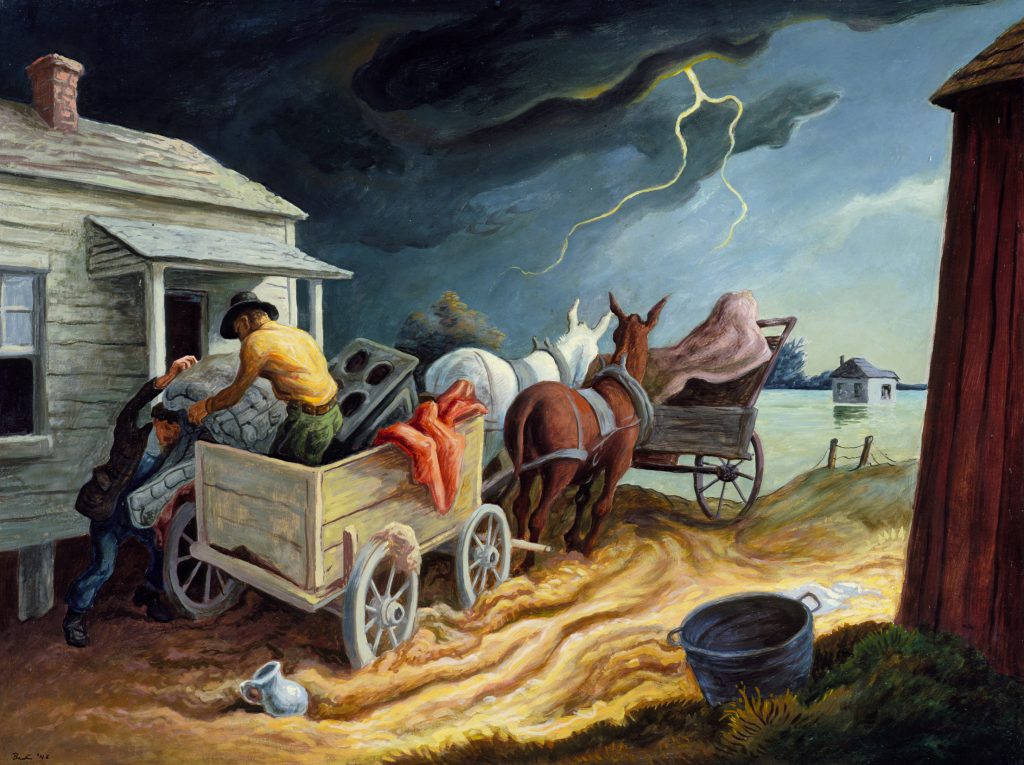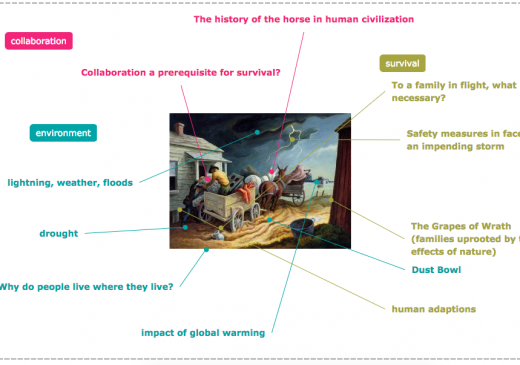Thomas Hart Benton (artist)
Thomas Hart Benton was an American regionalist painter and muralist. Early in...
view artistStudents will learn about the history of flood control as well as flood control practices today. They will also experience the difficulty in deciding upon the best solutions for environmental policies in a debate format.

Spring on the Missouri, by Thomas Hart Benton
Written by Zoe Voigt, Humanities teacher
Vocabulary
biographical
deliberate
deliberation
environmental lobbyists
flood control
petition
Materials
Maps and images of midwestern floods and flood control programs in the United States from 1927 to 1993
Additional Print Resources:
Fairbrother, Trevor, and Potts, Kathryn. In and Out of Place: Contemporary Art and the American Social Landscape. Boston: Museum of Fine Arts, 1993.
Hughes, Robert. American Visions: The Epic History of Art in America. New York: Alfred A. Knopf, 1997.
Menkes, Diana, ed. Of Time and Place: American Figurative Art from the Corcoran Gallery. Washington, D.C.: Smithsonian Institution Press, 1985.
Wilmerding, John. American Masterpieces from the National Gallery of Art. New York: Hudson Hills Press, 1980.
Links
Landsat Images of the Tri-River Area
New Approaches to Flood Control
Article entitled “Flood Plain Development: A Curse, Not a Blessing”
Testimony of Jim Robinson Jr., a farmer from Pinhook, Missouri, during his appearance before the United States Senate Committee on Environment and Public Works (S. 1987) on June 18, 2002: contained within full report of committee hearing or an audio excerpt in this article
Thomas Hart Benton was an American regionalist painter and muralist. Early in...
view artistby barryrbarber
view concept map